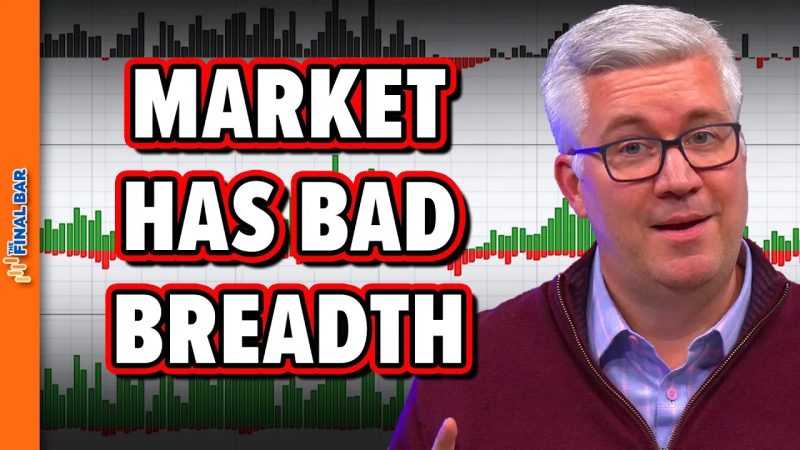Market Breadth: An Essential Indicator for Investors
Understanding market breadth is crucial for investors to gauge the overall health and direction of the stock market. While many investors focus on major indices like the S&P 500 or the Dow Jones Industrial Average, market breadth provides a more nuanced view of market conditions by looking beyond just a few large-cap stocks.
Market breadth refers to the number of individual stocks advancing versus declining within a given index or exchange. A strong market breadth means that a large number of stocks are participating in the market rally, indicating broad-based strength. Conversely, weak market breadth signals that only a select few stocks are driving the market higher, which may not be sustainable in the long run.
One commonly used measure of market breadth is the advance-decline line, which tracks the number of stocks closing higher versus lower on a daily basis. A rising advance-decline line suggests that the majority of stocks are moving higher, indicating a healthy and robust market. On the other hand, a declining advance-decline line may signal underlying weakness, even if major indices are reaching new highs.
Market breadth can also be assessed through other indicators such as the number of stocks hitting new highs versus new lows, the percentage of stocks trading above their moving averages, and the performance of small-cap stocks compared to large-cap stocks. By analyzing these metrics, investors can gain a better understanding of the market’s internal dynamics and identify potential shifts in sentiment.
When market breadth is strong, investors can have more confidence in the sustainability of a market rally, as it indicates widespread participation across various sectors and industries. This broad-based strength is typically associated with healthier market conditions and a lower probability of a major correction.
Conversely, poor market breadth can be a warning sign for investors. If only a handful of stocks are driving the market higher while the majority are underperforming, it may indicate a lack of conviction among market participants and a higher risk of a market reversal. In such scenarios, investors may consider reducing their exposure to stocks and shifting towards more defensive assets.
In conclusion, market breadth is an essential indicator that provides valuable insights into the overall health of the stock market. By monitoring market breadth indicators, investors can make more informed decisions and adjust their investment strategies accordingly. While strong market breadth is a positive sign for sustained market rallies, poor market breadth should not be ignored as it could signal underlying weakness and potential downside risks. In today’s dynamic market environment, staying vigilant and paying attention to market breadth can help investors navigate volatile conditions and better protect their portfolios.

